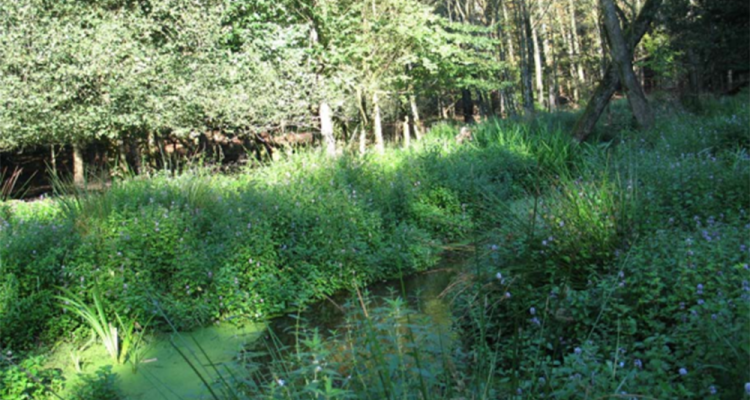
Interview
Water and Soil Guiding in practice: Leuvenum stream project
How can the water and soil guiding approach be applied in practice? On the Veluwe, Natuurmonumenten and Water Authority Vallei en Veluwe work to restore the Leuvenum stream. And this leads to unexpected results. Ralf Verdonschot, a senior researcher of freshwater ecology at Wageningen University & Research, explains what transformations are taking place in the area.
Soon, we saw significant effects. That was surprising, since we had assumed that such recovery processes cost time. But the stream showed evident changes after just a year.
‘On the Veluwe, east of Harderwijk, is where the Leuvenum creek flows. This creek had carved its way deep into the ground, with steep banks next to a dry forest. The stream had become so deep because all the branches that fell off nearby trees and fallen trees were removed to guarantee the water’s passage. The sand was carried away in higher river discharges, which caused the water to no longer reach the forest – an unnatural situation. In a natural valley, water and land merge gradually.
Such gradual transitions are essential for the proper functioning of the ecosystem. Raising the creek’s floor was our goal. Raising the floor enables the stream to flood, which is positive! The flooding provides the surrounding forest with water. And that is important, especially with the increasingly dry summers we are experiencing in the Netherlands.’
New seedlings
‘Natuurmonumenten and the Vallei en Veluwe Water Authority, who implement the projects, started their intervention in 2014. Sand was dumped in the creek, followed by bundles of wood to prevent the sand from being washed away immediately. This allowed new flumes to develop. Our role at Wageningen University & Research is to study what happens in the stream. Is this method of raising the stream floor effective? And how is life in and around the stream impacted?
Soon, we saw significant effects. Surprisingly, as we had assumed that such recovery processes cost time. But the stream showed evident changes after just a year. For example, water insects that are typical of natural creeks returned, and marsh plants started growing around the stream’s banks.
After a while, the old deciduous forest around the creek perished. But, at the same time, we saw new seedlings emerge, pertaining to trees that are native to such floodplains. European white oaks, for example. Trees of this type were scarce in the forest and had ceased to reproduce for many years due to unfavourable circumstances. In summary: raising the creek bed caused trees that don’t naturally thrive in a river valley to perish while facilitating the development of species that are native to such conditions.’
Gradual process
‘The creek floor was raised gradually, as simply dumping thousands of cubic metres of sand in a stream is rather rigorous. Taking several years to implement the changes allowed life around the water the opportunity to adjust to the changing conditions. The creek floor has been elevated by an average of between 30 and 60 centimetres. And the dry, barren forest that surrounds it has become a lush green! It is filled with plants and looks completely different compared to a decade ago. A green ribbon undulating through the forest.
And the soil has recovered too. The Veluwe has been experiencing issues with the mineral balance for years. The soil acidifies and is poor in nutrients. However, the soil has become more neutral in places where the Leuvenum stream floods. Plants thrive and provide more food for insects that feed on flowers and larger mammals such as deer.
There is another positive effect: the region’s groundwater is more effectively replenished. As much as 40 hectares of forest may flood during the winter. That water seeps into the ground, replenishing the Veluwe’s water supply. Some spots show a groundwater level increase of as much as 30 centimetres. As a result, the water supply lasts longer in times of drought.’
Building with nature
‘The Leuvenum stream project demonstrates how a robust system can be created by restoring natural processes in a region. This successful project has increased the popularity of elevating riverbeds, and similar projects are being developed in different regions of the Netherlands, from Drenthe to Brabant.
The next question is how we may develop a similar initiative in a more rural area. There, other factors are in play compared to a nature reserve. Still, in essence, the approach is similar. Building in collaboration with nature. That is what it’s about. Humans provide a nudge by intervening just once, after which nature takes its course. This approach was successful for the Leuvenum stream, raising our hopes about other measures for nature recovery.’